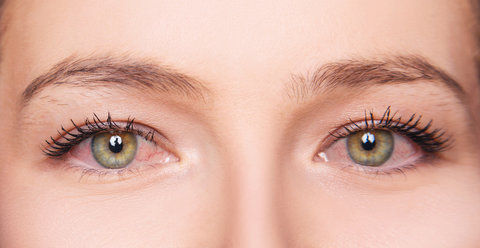Red Eyes: Why It's More Than Just a Cosmetic Concern
- Dr. Kelley

- Aug 25, 2024
- 3 min read

At Eye Associates of Winter Park, we often hear patients express concern about persistent redness in their eyes, saying things like, “I guess this is what it’s like to be over 40” or “I guess this is just from my long hours on the computer.” While many view red eyes as merely a cosmetic issue or minor inconvenience, chronic redness can signal something more serious: chronic inflammation. It’s important to recognize that this is never normal, even if it has been a part of your life for some time.
Why Red Eyes are a Health Concern
1. Indicator of Chronic Inflammation
Redness in the eyes serves as a signal that something is wrong, much like joint pain can indicate arthritis. Persistent redness often points to chronic inflammation, which can be associated with several conditions:
Dry Eye Disease: This progressive condition occurs when your eyes do not produce enough tears or the right quality of tears, signaling that your eyes are in distress.
Allergies: Seasonal or environmental allergens can lead to chronic inflammation and redness.
Blepharitis: Inflammation of the eyelid margins can cause ongoing redness.
Conjunctivitis (Pink Eye): Chronic conjunctivitis, caused by infections or irritants, can lead to prolonged redness.
Uveitis: Inflammation of the middle layer of the eye (uvea) can cause redness, pain, and blurred vision.
Scleritis: Severe inflammation of the sclera (the white part of the eye), often linked to systemic inflammatory diseases.
Angle-Closure Glaucoma: This serious condition, marked by increased eye pressure and blocked fluid drainage, can result in intense redness, pain, and vision changes.
2. Potential for Progression
If chronic inflammation is left untreated, it may lead to more severe issues. Persistent inflammation can damage the eye’s surface, increase the risk of infections, and even impact vision. Additionally, underlying conditions such as autoimmune diseases or glaucoma may worsen if inflammation isn’t properly managed.
What You Can Do about Red Eyes
If you’re experiencing chronic redness, consulting with your eye care professional is crucial. At Eye Associates of Winter Park, we use advanced diagnostic tools to identify the underlying causes of redness and develop a personalized treatment plan. Here’s how you can manage and address chronic redness effectively:
1. Avoid Irritants: Identify and avoid potential triggers like allergens, smoke, or harsh environmental conditions, which can worsen inflammation and redness.
2. Avoid Redness Relief Drops: Be cautious with over-the-counter redness relief drops—they worsen redness over time due to rebound hyperemia, and masking the symptoms without treating the root cause leads to a dependence on these drops.
3. Maintain Eye Hygiene: Regularly clean your eyelids and lashes, especially if you have conditions such as blepharitis. Proper hygiene helps reduce irritation and inflammation.
4. Use Prescribed Medications Consistently: Adhere to your doctor’s recommendations for any prescribed eye drops or treatments. Consistency is crucial—using treatments sporadically may limit their effectiveness.
5. Stay Hydrated: Adequate hydration supports tear production and overall eye health. Make sure to drink enough water throughout the day.
The Importance of Consistency and Reassessing Treatment

1. Understand the Limits of Symptomatic Treatment: Relying solely on temporary fixes, such as over-the-counter drops or warm compresses, might not address the root cause of chronic redness. Just as a cough suppressant doesn’t cure a bacterial infection, temporary measures may not be sufficient for chronic conditions.
2. Stick to Your Routine: If you’ve been prescribed specific treatments or therapies, it’s essential to use them consistently. Think of it like maintaining a garden—watering only when the grass is dead won’t help; a regular routine is necessary for keeping it healthy. Consistent use of prescribed medications and adherence to eye care routines are vital for effective management.
3. Re-evaluate Your Treatment: If you’re following your treatment plan but still experiencing frequent flare-ups, it might be time to reassess your approach. Chronic dryness and inflammation require a comprehensive strategy. If your current regimen isn’t working, consult with your eye care professional to explore new options and adjust your treatment plan as needed.
By understanding and addressing these aspects, you can better manage chronic redness and protect your eye health. If you continue to experience persistent redness despite your efforts, don’t hesitate to reach out to us at Eye Associates of Winter Park. We’re here to help you find the right solutions and keep your eyes comfortable and healthy.
Schedule an eye exam with us today to start your journey towards clearer, healthier eyes.
In good health,




Comments